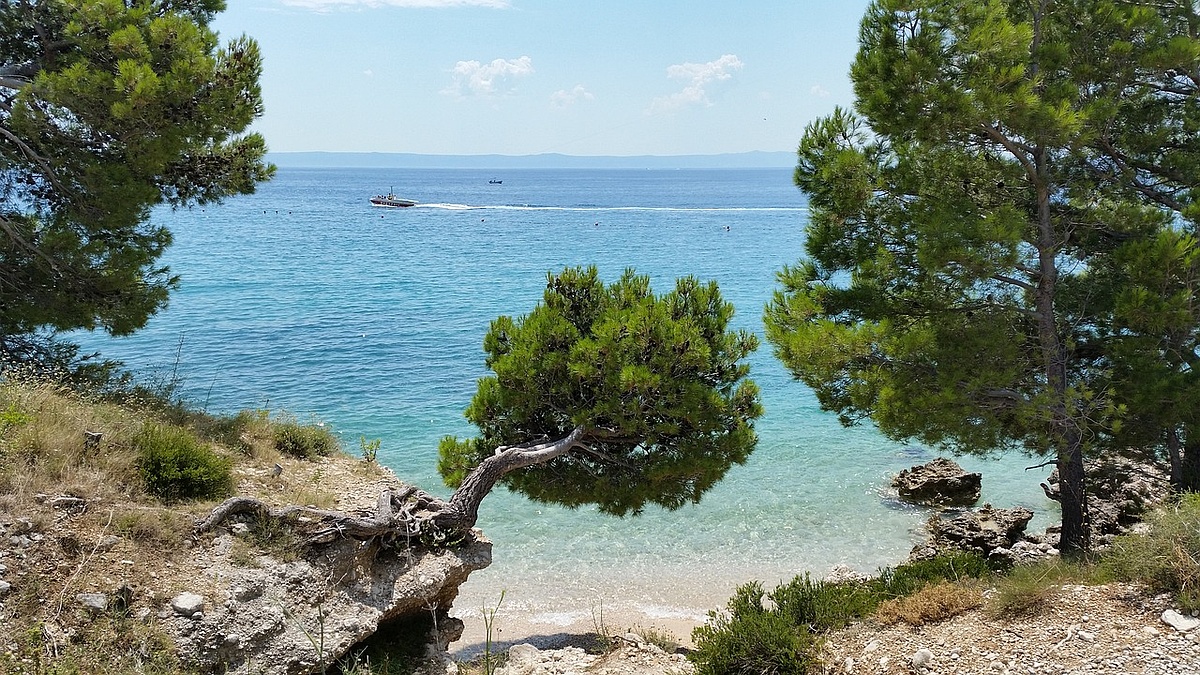The Croatian coast from Zadar to Trogir offers visitors an amazing amount of history and culture, as well as stunning scenery, in less than 144 kilometres. And that’s just the mainland – there are dozens of islands dotted along the coast, some of which are worth traveling to if you want to get away from the world for a while. CNN Travel Collected Some travel destinations are worth visiting.
Zadar and its surroundings
In the historic center of Croatia’s oldest city, you can learn about what makes the country’s history so fascinating. At the heart of Trg Opatice Čike are the remains of the ancient Roman Forum, many of whose stones were used to build the adjacent 9th-century St. Donatus Church. If you walk along the waterfront of Zadar, you will find yourself already in the 21st century, where you will come across two art installations designed by Nikola Bašić, which are now major attractions.
Sitting on the shimmering marble steps by the water, you can hear a sound Sea apparatus (Sea Organ) It is a system of whistles operated underwater by waves. Right next to it, on the waterfront, is a night job Illuminated blue glass panels Recognizable on the basis that if you head north from the center along the coast, you’ll come to the family-friendly beaches of Borik and Diklo, while city beaches are found below the old town.
Zadar Archipelago
Many of the many islands dotted off the coast of Zadar can be reached by ferry. The closest and most accessible – Ugljan and Pašman – are only 25 minutes away by boat and are almost like the outskirts of Zadar. These are suburbs covered in olive groves, divided into cobblestone coves and interspersed with hiking and cycling trails.
About three hours by ferry from Zadar, Silba is one of the most remote and quietest places around Driving and cycling are prohibited in the summer months. Jagged Dugi Otokot, meaning ‘Long Island’, lies west of Zadar, with a coastline lined with small fishing villages, old Yugoslav military submarine bunkers, and Veli Rat – the tallest lighthouse in the Adriatic.
Kornati National Park
Boaters have long known the joys of traversing Kornati National Park, an archipelago of 89 eerily barren but absolutely beautiful islands south of Dugi Otok. These islands are famous There is no running water or electricity anywhere, only rain water, gas and solar power. Once the season begins, the islands of Kornati, Priškera, and Levrnaka come alive, opening up a wide selection of restaurants and homes for rent to the boating crowd.
Sibenik
Oddly enough, one of Croatia’s greatest cities is overlooked by most tourists, although Šibenik is definitely worth a visit. Here is the UNESCO-protected St. James’s Cathedral, a Gothic Renaissance wonder flanked by a frieze of 71 sculpted images. Travelers here should also make time to visit the city’s three castles built by the Venetians.
Saint Michael’s Castle is less than a 10-minute walk from the waterfront, which is also the venue for outdoor pop concerts in the summer, and offers a great view of the Adriatic Sea.
Šibenik is often used as a starting point for visits to the interior of Krka National Park, which has impressive waterfalls.
Tourists can take buses to the riverside town of Skradin, where they can take a boat ride along the Krka River, passing seven impressive waterfalls. The most famous is Skradinski Buk, with 17 waterfalls cascading into one another. All of these places are worth visiting in the late spring, early summer, and fall, as the water level can drop in the summer months.
primostine
Wine lovers can settle down in the charming town of Primošten. Nearby wineries are convenient to visitwhere winemakers specialize in the indigenous Babić grape variety, crafting smooth, fruity red wines in landscapes of hills and olive groves.
The old town of Primosten is on its own little island, which is connected to the newer part of the city by a dam. Its terraced alleys lead to the 15th-century Church of St. George, which overlooks the Adriatic Sea. To the north of the old town is a small promontory where pebble beaches lined with pine trees await visitors.
Trogir
The ancient walled city of Trogir – what is it on the UNESCO World Heritage List It also sits on its own little island, between the mainland and the vast island of iovo, whose northern and western shores are lined with beach resorts. All three are connected by bridges.
Medieval palaces and cobbled alleys are delightful. You can find spaces where restaurants and bars are crowded into small courtyard gardens. Walking along the waterfront of the Riva River, you can reach the 15th-century Kamerlengo Castle, which is a great venue for classical and pop concerts in the summer.












































